
“There were other trees, many decrepit. In the middle was a kiln where an Indian princess taught ceramics under dubious auspices. She had a son who didn’t work. Both were on relief, and the relief checks were delivered to the princess at a mailbox fastened to a tree. The hullabaloo about disturbing the princess, the kiln, the old tulip tree, and other flora and fauna was terrific.“
-Robert Moses, ”Public Works,” 1970
Below editorial from:
The Brooklyn Daily Eagle
December 13, 1936

“Perhaps the Park Department will take great care to preserve the Indian relics. Perhaps the Pottery will function more effectively in its new and modern quarters. But somehow Inwood Hill Park will never be the same with new, paved paths to replace the Indian trails along its sloping landscape, with the Pottery and the tulip tree gone, with the cove straightened out, and with a great steel bridge sprouting from its side to connect it with the Spuyten Duyvil.
Rising above an enchanting little cove in the Harlem River at the most northerly tip of Manhattan Island, Inwood Hill Park has, until recently, managed to escape the inroads of a brick and steel metropolis. Though virtually a stone’s throw from upper Broadway, it has remained miraculously unaffected by the changes that have taken place all around it.
One of the oldest homes of the aborigines, it is said to have been the very last bit of Manhattan relinquished by the Indians after they sold that famous Island to the Dutch. And now, centuries later, as if in deference to the wishes of its early red-skinned inhabitants, that sylvan abode still stands, the contours and paths of the ancient village of Shora-kap-kok unchanged.
On the side of the hill is a cave that is believed by anthropologists to have been the earliest human habitation on Manhattan Island. Near it have been found all sorts of utensils and tools that belonged to many different generations of Indians, from prehistoric hunters to seventeenth century warriors, who, according to legend, fought the crew of Henry Hudson’s Half Moon.
Near the cave stands and old and dying tulip tree, in the shade of which Henry Hudson is said to have held a powwow with the Indians that ended the hostilities. And not far from the tulip tree is the Spouting Spring, from which the ancient Indians drew their water.

Until last month, the cave was inhabited by Princess Naomie (Mrs. Naomie Kennedy), an educated Cherokee Indian, who was brought to New York some seven years ago from New Orleans by the Dyckman Institute to live in the cave in the style of her ancestral cousins and thus preserve the historic atmosphere of the place. Surrounded by her chickens and her rabbits, and dressed in authentic Indian costume, she did much evoke for visitors the spirit of the ancient Weckquaesgesk Iroquois.
On the side of Inwood Hill overlooking the Harlem River, an old whitewashed frame building nestles near the cove, partly hidden by the shrubbery and the hill. For many years this century-old cottage, equipped with neither gas nor electricity, has been the home of Mrs. Aimee LePrince Voorhees and her husband, the late Harry Voorhees. They discovered the cove and the cottage some 20-odd years ago—they were out cruising, and their engine broke down and then drifted into the Harlem River cove.
The daughter of two prominent ceramists, and herself a sculptor and a connoisseur of Indian arts, Mrs. Voorhees, and her late husband (whose interests were in harmony with hers) were so captivated by the beauty of the place, and the Indian ceramics all around it, that they leased the deserted cottage and remained there, devoting the greater part of their time and fortune to the study and advancement of Indian crafts, particularly the forms and decorations derived from ancient Iroquois pottery.

In 1923 they founded the Inwood Pottery, housed in a crudely constructed wooden building, beside an old Indian trail, just a few steps away from the cottage. Beginning with just a kiln, a bench, a bin and a wheel, the studio has grown bit by bit, as its work has expanded. Here, inspired by the lore of the Indians who inhabited the place, mixing their clays with water from the pouting Spring, just as the Iroquois had done centuries before them, sculptors and potters, hobbyists and professionals, grown-ups and children have come to make vases and book-ends, and other art objects, many of which have pound their way to some of the leading museums in the country.

In fact, so definite a niche has the Pottery carved for itself in the educational setup of New York that work done there is credited by the Board of Education, Hunter College and the Board of Regents. Branches have been established at various schools and Y.W.C.A.’s throughout the city, including the Central branch of the Y.W.C.A. at 30 3rd Avenue in Brooklyn.
Much of the educational work carried on by Mrs. Voorhees at Inwood Park has been done under the auspices of the Dyckman Institute, an historical society interested in the preserving of landmarks and folklore of upper Manhattan.

During Mayor Hylan’s administration, the city bought for the park purposes all the land at Inwood Hill, including the plot on which stood the Voorhees cottage. The Dyckman Institute requested that it be assigned the care of the land along the shore of the cove, consisting of about 16 acres and covering interesting Indian remains, and asked that Mr. and Mrs. Voorhees be allowed to remain and take charge of the educational work of the institute.
The Hon. Francis Gallatin, commissioner of Parks, welcomed the proposal and issued a one-year permit to Mr. and Mrs. Voorhees to remain in their cottage and carry on their work, a permit which has been renewed from year to year by succeeding Park Commissioners.

Thus everything at Inwood Hill Park ran along smoothly and serenely, a world within a world, an oasis of bygone simplicity, undisturbed by the hustle and bustle of twentieth century complexity—ran along smoothly until the advent of the PWA, the NYA, and Robert Moses as Park Commissioner. Now that adventitious combination has succeeded in blasting the tranquility of even Inwood Hill. Now beauty is to yield to utility, tradition to expediency and sentiment to logic.
The War Department, with funds released by the PWA, got busy straightening out the bend in the Harlem Ship Canal. The Spuyten Duyvil side of the “U” curve is being dredged and the Inwood side, which formed the picturesque cove at the foot of Inwood Hill, is going to be filled in.
This improvement has been loudly lamented by sentimental boatmen as an unnecessary hardship on the already diminishing number of boat enthusiasts. But the members of the few boat clubs that still dot the Harlem River shoreline do not complain. Harry Edwards of the Nonpareil Boat Club, who has been rowing and yachting in that vicinity for 30-odd years, says that whatever is being sacrificed in scenic beauty and a cozy haven will be more than compensated for by the elimination of the whirlpool that used to hamper boatmen near the point that is being dredged.

The Park Department, moreover, is planning to leave a portion of the old cove unfilled, so that it may eventually build a boat basin for small craft at that spot. But boat basin notwithstanding, Inwood Hill Park will never be as lovely without its cove and natural shoreline.
What seems an even greater heresy to those who dote on sentiment is the fact that the ground immortalized by Washington Irving is soon to become just another bridge approach with the completion of the largest hingeless bridge in the world, connecting Spuyten Duyvil with Inwood Hill Park.
As for the park itself, despite the criticism that has been heaped upon the Park Department (Mr. Moses has been accused of anything from converting a place of historical interest into a baseball field merely to indulge a whim, to filling up the Harlem River just so as to be able to change the map), little change in contemplated.
In spite of reports to the contrary, no new baseball or other athletic field is to be built. In Commissioner Moses’ own words: “This plan provides for the preservation of the natural features of the site…to make the park area available for those seeking quiet relaxation.” The plan, however, includes the laying of new paths and the paving of old ones—some of them old Indian trails; the planting of new trees and the cutting down of dead ones—not excepting the tulip of Henry Hudson fame.

In accordance with the belief of the present park administration that no private or semi-public institution, however worthy, has a right to be on park land (Robert Moses believes that even the Metropolitan Museum of Art should never have been built in Central Park), and, consistent in its policy of reversing the parks for purely recreational purposes of an outdoor nature, the Dyckman Institute, the Pottery and Princess Naomie have had to go. The Dyckman Institute hopes that eventually the Park Department will build a fine museum for it to replace the building recently demolished. But in view of the present policies of that department, the prospect seems unlikely, and the institute will more probably build its own new headquarters or share those of the Dyckman Cottage, the city museum at 204th Street and Broadway, originally preserved under the auspices of the Dyckman Institute.

The Inwood Pottery, however, has fared much better than the institute. What at first seemed a calamity has turned out to be a blessing in disguise. When Mrs. Voorhees was given just 25 days notice early in October that she would have to get out by November 1st it seemed as though all she had accomplished in a lifetime of effort was being heartlessly wiped out. For moving the kilns hastily and carelessly and disrupting the classes—assuming she could find another site so quickly—would have proved disastrous.
But Commissioner Moses agreed to stay the eviction order until December 1st. And in the meantime a group of ceramists and art lovers formed the Inwood Pottery Association to help Mrs. Voorhees’ Pottery continue its work. The new society, which was formed on October 28th at an emergency meeting called at the American Women’s Association, has in the short period of its existence greatly added to the strength and prestige of the Pottery.
Due to the efforts of the new association, Mrs. Aimee LePrince Voorhees and her staff will be ready to begin work on January 1st in the new and spacious quarters at 503 West 168th Street. With more commodious classrooms, better equipment and greater accessibility that it ever enjoyed before, the Inwood Pottery will undoubtedly march on to new achievements and even greater renown.
But no matter what its fame and influence, it will lack the glamour of its setting in the glen at Inwood Park.
Nor will Inwood Park ever be as glamorous without the charming, little, romantically dilapidated barrack that housed the Pottery.”
Examples of Inwood Pottery:
Click here to read more about the old Inwood Pottery.


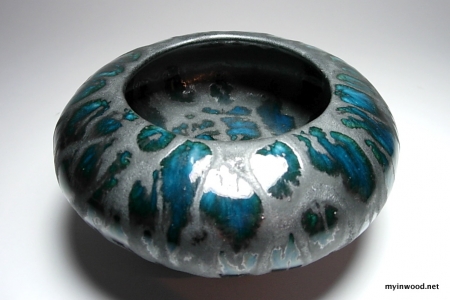
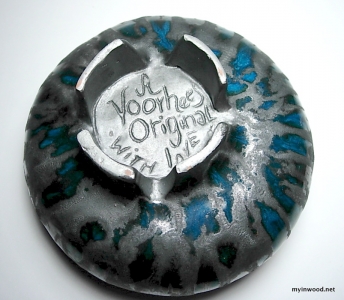
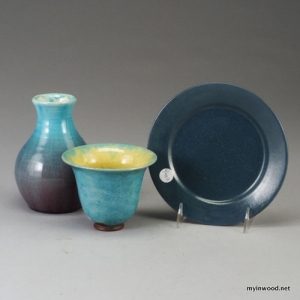
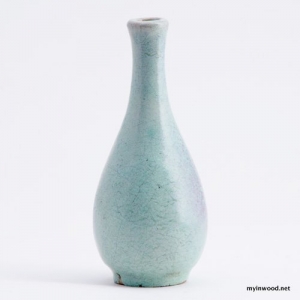
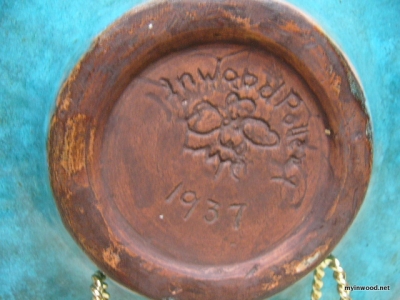
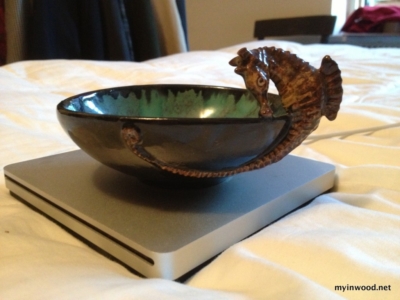
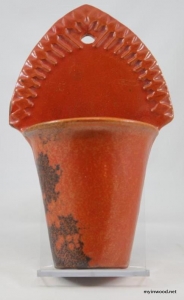
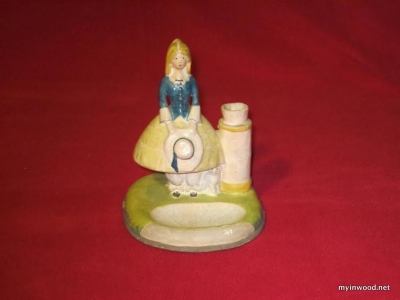
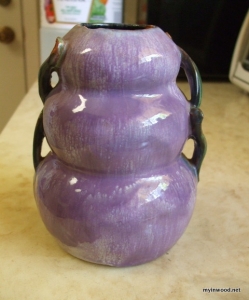
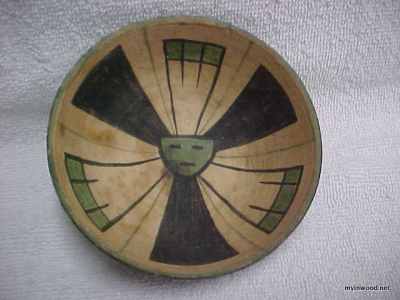
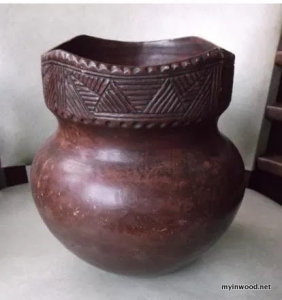
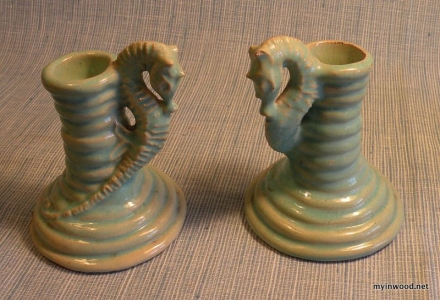
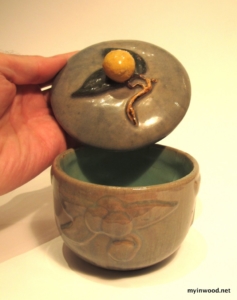
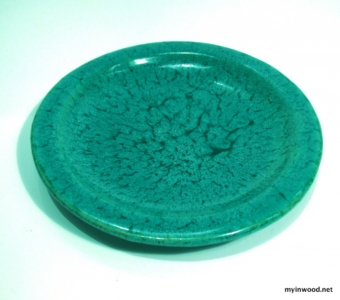

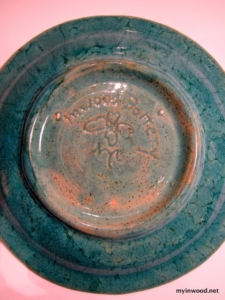
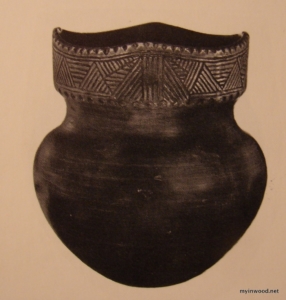







A wonderful labor of love. Delightful to read and to see. A first-rate piece of research. Thank you.
[…] A Potter’s Lament […]
[…] 1936: Robert Moses evicts all “squatters” from the park. Eviction notices are issued to the Inwood Pottery Works and Dyckman Institute curator Naomie Kennedy (commonly known as Princess […]
[…] For more on the Inwood Pottery Works, click here. […]